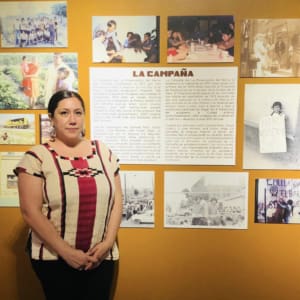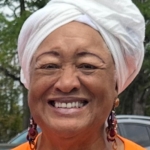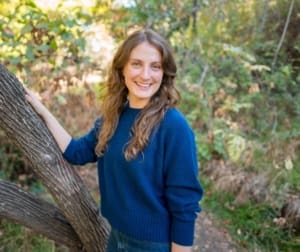Mapping Community-Led Climate Solutions: Climate Communities Network Action Plans
Explore community-led climate solutions and action plans from the NAM Climate Communities Network that address health, sustainability, and resilience.
The following Climate Communities Network (CCN) Action Plans propose solutions to priority climate and health issues in Members’ communities (e.g., disaster preparedness and resiliency, climate and health education for youth, etc.). The Actions Plans are time-bound projects that each CCN Member will work to advance during their time in the Network with the support of NAM staff, Strategic Partners, and sponsors. Learn more about CCN Members and Strategic Partners.
Each Member has identified support opportunities that could help advance their Action Plan. To learn more or explore collaboration with a CCN Member, email [email protected]. The NAM can connect interested supporters to community leaders directly but will not play a role in any resulting collaborations.
This resource will be updated with additional content by Summer 2025. Sign up for updates.
DISCLAIMER: The community organizations featured on this webpage are independent entities not formally affiliated with the National Academy of Medicine. Featured project plans and descriptions are the responsibility of the associated community organization and do not necessarily reflect the views of the NAM or the National Academies of Sciences, Engineering, and Medicine.
Chamizal Environmental Health
Cemelli de Aztlan
La Mujer Obrera
El Paso, TX
La Mujer Obrera's project will create a community-driven Action Plan to address environmental hazards in our neighborhood. In establishing resident-led committees, those who are most affected by these pollutants will be part of the process to guide, advise and plan ways to address, reduce and mitigate. The goal of the project is to ensure residents are part of creating an action plan that prioritizes public health and results in a safe environment in barrio Chamizal.
“As a predominantly working poor neighborhood, the power structure can’t see our contributions as environmentalists despite the fact that many come from a lineage that respects mother earth and carry on practices like collecting rainwater, reusing materials, walking everywhere, tending to herbs, growing foods, gardens, watering plants while singing to them, conscious of our responsibility to our community and our ecosystem. These relationships are important, part of who we are, and should be valued and can offer the solutions to undo the damage of the climate crisis.”
Collaboration opportunities:
- ArcGIS technical assistance
- Environmental educational materials in Spanish for all ages, including children and elders
- Expertise to review and translate data
- Spanish speaking experts in areas of Children's Environmental Health and Development
- Policy change partnerships
- Funding opportunities for communications and organizing
Sustainable Solutions After Disaster: Community-Led Disaster Preparedness Plans for Vulnerable Communities
Chandra Brown & Leevones Fisher
Lifelines Counseling Services & Bay Area Women's Coalition
Mobile, AL
The purpose of this project is to execute a community-led disaster preparedness plan in Mobile, AL. The community impact is to sustain the knowledge needed, build community relationships, and create capacity for diverse community voices to be a part of the plan to effectively serve the community during disaster times. The overall purpose of the project is to build community resiliency. We build resiliency through connectedness, discussion, respectful dissent and consensus. Through this project, we are creating a plan with the community’s voice centered. It allows each community member to contribute their offering and share their needs.
“We strongly believe that the answer is in COMMUNITY. The community knows what we need. Listen to us, partner with us, support us...as we make our communities stronger for everyone.”
Collaboration opportunities:
- Funding to expand project to include an additional 3-5 underserved communities in Mobile County
- Meeting facilitator for end of grant meeting with local Emergency Management Agency
- Talent – academician/researcher to conduct needs assessment and gap analysis
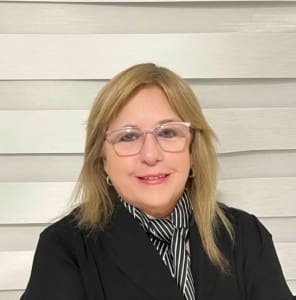
Center for the Training of Community Leaders in Resilience to Extreme Natural Events
María del Carmen Zorilla, EdD
University of Puerto Rico
San Juan, PR
This project aims to strengthen the resilience of communities in Puerto Rico against climate-related hazards, with a focus on flooding and landslides. These events, exacerbated by climate change and deforestation, pose serious risks to communities with limited resources. The project addresses two main issues: exposure to extreme weather events and low climate literacy. Through community-led education and practical actions—such as identifying risk areas and promoting nature-based solutions—residents will gain the knowledge and tools needed to better prepare for, respond to, and recover from climate impacts.
“This project is urgent because Puerto Rico faces significant climate vulnerabilities across the island, especially in disadvantaged communities... With 70% of the population living below the poverty line and insufficient early warning systems, investing in community resilience is a critical priority for collective safety and well-being.”
Collaboration opportunities:
- Personnel, including bilingual youth community volunteers, environmental hydrologist(s), and data analysts
- Materials to transform two training center rooms into resilience centers
- Equipment, such as computers for community leaders’ use, solar panels for the training center, satellite radios for emergencies, and more sophisticated sensors and other data collection devices
- Funding for specialized trainings, equipment maintenance, and project sustainability
- Partners who can develop climate education curriculum and host workshops and trainings for community members on data collection and interpretation

The Doctors within Borders Safety Net Center
Armen Henderson, MD, MBA & Phoebe Langius
Dade County Street Response
Miami, FL
This project proposes the development of the Doctors Within Borders Safety Net Center, a scalable hub for disaster resilience and health equity. The Center will focus on identifying, treating, and researching the most impacted populations in Miami-Dade County through targeted programming and outreach before, during, and after climate-related emergencies, thereby directly and indirectly increasing the chances of survival for individuals within these populations. The project will also involve the creation of a Critical Appraisal Tool that assesses the ability of anchor institutions and safety net organizations to respond to the most impacted populations.
“Communities in Miami-Dade County, particularly Black, low-income, and unhoused populations, face escalating climate threats with little to no reliable support... Dade County Street Response fills this gap by providing grassroots, year-round infrastructure—education, mobile health care, harm reduction, and crisis de-escalation—to mitigate harm before, during, and after disaster. Our model empowers communities to build resilience from within, ensuring those most at risk are not left behind as climate-related emergencies become more frequent and severe.”
Collaboration opportunities:
- Additional funding for year-round operations and expansion of services
- Individuals to aid in the creation of a community outreach team
- Aid with the creation of the center, particularly with site preparation, architectural planning, permitting, staffing models, and community integration
- Technological support to create a model for data collection, analysis, and development for the creation of the Critical Appraisal Tool
Youth-Led Climate Resilience at East Oakland’s MetWest High School
Lil Milagro Henriquez
Mycelium Youth Network (MYN)
San Francisco Bay Area
This project aims to improve the physical infrastructure at MetWest High School, a state-designated toxic site in East Oakland, by developing youth-led programs that use regenerative landscaping to remediate current toxicity and contribute to sustainable long-term environmental and human health through nature-based processes such as rebuilding healthy soil, supporting biosequestration, utilizing drought-tolerant and native plants, and improving the water cycle. By fundamentally improving the biotic ecosystem in this holistic way, and guided by the knowledge that landscapes produce 12% of GHG emissions, this project promises better water infiltration and retention, upgraded water quality, and improved community fortification from the unknown multiple impacts and challenges of climate change. This nature-based approach to reduce emissions and boost carbon sequestration through enhanced sinks will do a small part in tackling climate change and biodiversity loss in the San Francisco Bay Area where, in particular, increased droughts, flooding, and temperature fluxes negatively influence soil and plant health.
“At Mycelium Youth Network, we utilize the best in scientific thinking, ancestral knowledge, and radical imagination in order to support youth to build a world where they can thrive and feel optimistic for the future, not by denying the realities of climate change but by creating realistic, creative, and holistic solutions to those challenges. Youth are invited to dream big and to hold on to critical hope as an active practice of resilience in the face of climate uncertainty.”
Collaboration opportunities:
- Support for strategic planning for overall financial help for organization
- Corporate partners and investors committed to supporting MYN’s grassroots efforts to build climate resilient solutions in a rapidly changing world
- High-level professional tech support with updating and reimagining communication platforms (e.g., website and social media networks) to better align with shifting organizational and community needs
- Grant writing support and outreach to values-aligned corporations to explore corporate donations
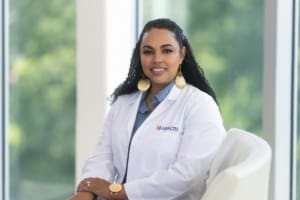
STEMM Scholars for Environmental Justice (SSEJ) Program
Ashley Williams
USA Health Center for Healthy Communities
Mobile, AL
The STEMM Scholars Program for Environmental Justice is a youth empowerment program that seeks to promote the connections between STEMM fields and environmental health for high school juniors and seniors. The Gulf Coast is vulnerable to extreme climates and environmental hazards including hurricanes, extreme heat, and even a major oil spill in recent years. Through the STEMM Scholars program, our students will learn from our history, local experts, and our local environment to better understand how we can each contribute to making our ecosystem healthier.
“We have the opportunity to inspire our youth, the next generation of STEMM leaders, and they will be conscious of environmental health and justice. This is such a big deal!”
Collaboration opportunities:
- Experts throughout the STEMM fields who can shed light on their profession and how they are addressing environmental challenges
- Experts from a variety of disciplines to guide curriculum development
- Evaluation expert
- Longitudinal funding
Organizing Physicians and Medical Students, Community Clinics, and Street Medicine Teams for Climate Health Action
Jerry P. Abraham, MD, MPH, CMQ
Kedren Community Health Center, Charles Drew University of Medicine & Science, LA County Medical Association
Los Angeles, CA
The summer of 2024 was the hottest on record for Los Angeles, and, in January 2025, LA suffered the deadliest and costliest wildfires in California history. My project is focused on developing a strategy that addresses the various domain of climate action (e.g., adaptation, mitigation, education, equity) as identified in the Climate Change and Health Framework for Action. This strategy will outline ways in which various groups can tackle these domains—specifically, organized medicine, community health centers, and other health professionals including civic engagement as well as local and state health departments. Grassroots organizing of frontline clinicians, community health centers, and street medicine teams is essential for addressing the climate crisis. This project will focus on answering the question: How do we better bridge the work of government public health officials with the frontline health professionals seeking climate action and change?
“Our addiction to fossil fuels is killing us. Not only are our temperatures and greenhouse gases rising, but our summers are hotter and wildfires are increasingly devastating in LA. While we have come a long way in convincing physicians and medical students that addressing the health harms of climate change are well within our lane as health professionals, we still have a long way to go to treat our underlying addiction to non-renewable energy and in our climate change adaptation, mitigation, education, and equity efforts. We still have much work to do.”
Collaboration opportunities:
- Technical expertise to develop referral resources for at-risk patients at federally qualified health centers from the health harms of climate change in South LA
- Research and evaluation partnerships for creating tools/digital tech solutions for clinics and hospitals so they can more easily complete carbon inventories, assess at-risk patients, and improve treatment and prevention strategies
- Communications consulting to visually depict a timeline of national climate and health organizing milestones
Community Pyrotherapy: Beneficial Fire for Healing and Education
Blake Ellis
Chico State Ecotherapy Program - Chico State Enterprises
Chico, CA
Our Action Plan addresses the growing climate trauma in Northern California caused by catastrophic wildfires—including the 2018 Camp Fire, 2020 North Complex Fire, 2021 Dixie Fire, and 2024 Park Fire—by building community resilience and mitigating future wildfire risks. Using a transdisciplinary approach, the project blends Indigenous cultural fire education, hands-on prescribed fire training, and nature therapy to help communities heal, reconnect with fire-adapted landscapes, and transform their relationship with fire from one of fear to one of connection. By fostering emotional healing, increasing public understanding, and encouraging active engagement, Community Pyrotherapy promotes mental health, ecological stewardship, and a cultural shift towards seeing intentional fire as a powerful tool for both land and community restoration.
“In the ashes of all we’ve lost, my community teaches me what it means to rise—not unscathed, but more deeply rooted in love, place, and each other. Community Pyrotherapy is born from this hope: that by returning to fire with reverence and care, we can transform trauma into healing, fear into connection, and loss into a renewed sense of belonging—to the land, and to each other.”
Collaboration opportunities:
- Research and evaluation partnerships: collaborate on building evidence base on how nature-based
mental health services, education, and prescribed fire can support climate resilience and mental health outcomes in wildfire-impacted communities - Targeted funding and strategic investment: support community pyrotherapy through aligned funding streams that bridge environmental restoration and stewardship, mental health services, and community capacity-building
- Integrated storytelling and communications: help develop a community-driven storytelling initiative that captures and shares personal narratives from participants in the community pyrotherapy project
- Policy and systems integration: partner in calling for policies and funding mechanisms that recognize the interconnectedness of environmental health and community mental well-being

Agua es Vida: Climate Change, Water Quality, and Latine Community Education
Gabriela D. Lemus
Maryland Latinos Unidos (MLU)
Montgomery County, MD
The "Agua es Vida" Action Plan aims to benefit all community members by tackling environmental health disparities in underserved Latine communities in Montgomery County, MD, with a focus on water justice and climate and health education. This initiative empowers youth, community health workers (CHWs) and promotores, and small business owners to become environmental health leaders through culturally responsive training, bilingual outreach, and community-driven data collection. By launching bilingual campaigns, implementing a Knowledge, Attitudes, and Practices (KAP) survey, and offering youth leadership and CHW training programs, the project raises awareness about the health impacts of contaminated water and climate change. The plan aims to reduce health disparities, improve water quality, and promote environmental justice through partnerships, education, and advocacy.
“My community inspires me with its resilience, creativity, and deep-rooted connection to the land and each other. I’m excited to implement this project because I believe it will empower our people—especially youth and workers—to lead the way in protecting our health, our water, and our future.”
Collaboration opportunities:
- Participate, partner, and/or co-host bilingual environmental health workshops or webinars tailored for Latine youth and small business owners
- Support curriculum development or provide expertise for community health workers and youth leadership training focused on climate and health
- Collaborate on data analysis or storytelling using survey results to inform policy efforts
- Connect with funding, in-kind resources, or outreach channels to expand “Agua es Vida” awareness campaign
- Join as a partner to strengthen cross-sector collaboration between community organizations, schools, and government agencies

Empowering Resilient Women (ERW)
Joanne Pérodin
The CLEO Institute
Miami, FL
The Empowering Resilient Women program aims to help understand the impacts of climate change on health, focusing on issues like extreme heat, hurricanes, gentrification, civic engagement, and food security. It provides practical tools and resources to build resilience through climate mitigation and adaptation strategies, such as starting urban gardens and disaster preparedness and response. Participants will also receive coaching on financial planning, helping them prepare for extreme weather events. Ultimately, the program aims to benefit all community members by fostering a deeper connection between climate action, personal well-being, and gender equity with a focus on improving both individual and community resilience.
“What inspires me to implement this project is the incredible women in my community who face climate challenges head-on, showing strength and determination every day. My hope is to empower these women to lead climate solutions, creating a ripple effect that will strengthen our community for generations to come, and we won't stop until every woman has the tools to make a lasting impact.”
Collaboration opportunities:
- Funding to provide stipend to program participants
- Partners to provide policy training
- Programs, resources, and/or training opportunities for participants to engage in policy-related initiatives
- Workforce development opportunities (e.g., apprenticeships) to upskill participants and connect them with employment opportunities

Accessing Local Foods as Climate Justice: Increasing BMC’s Local Food Purchasing and Access to Local Produce by Community Members
Margot Tang
Boston Medical Center
Boston, MA
Our goal is to expand patient and community access to local, fresh produce at Boston Medical Center (BMC) in order to support climate justice while addressing food insecurity. BMC is an anchor institution in Boston, serving a diverse population which includes those without documentation or standard insurance; equity and innovation are core aspects of its mission. The project focuses on increasing sustainable and local food purchasing at BMC. By expanding and developing its rooftop farms, building a greenhouse, continuing to distribute food via the Preventative Food Pantry and Farmers Market, and building partnerships with nearby—especially BIPOC-run—farms and businesses along with the City of Boston, BMC will improve access to culturally concordant foods and decrease its carbon footprint.
“Bringing our pediatric patients up to our rooftop farm and watching their and their family's excitement to experience the harvesting and tasting of fresh vegetables is a tangible inspiration for expanding this important work. In a broader sense, I see this project as a piece of a broader movement for health equity and for climate and food justice - issues that impact my patients and community on a daily basis.”
Collaboration opportunities:
- Funding for further projects such as a greenhouse for further programming and for seedlings and growing
- Students, volunteers, and community members who can help ensure culturally relevant material in multiple languages
Climate Change and Health: Education and Advocacy
Cynthia P. Robertson
Micah Six Eight Mission
Suphur, LA
Our project focuses on community engagement and capacity building to the end of building broader societal involvement at the intersection of climate and health equity. We plan to host a Health & Environment Summit focused on climate change and health, climate education, and climate advocacy after a year of climate- and environment-focused community education meetings. Our community has been the target of years of fossil fuel industry deceptive marketing - blaming the poor health in our area on community members’ unhealthy behaviors and denying that the cumulative air, water, and land pollution has had any effect on our health. Our project focuses on countering that marketing and informing the community with solid information about these deceptive practices, with target audiences of health care, legal, and environmental professionals on day one of the Summit, as well as community youth and adults on the second day.
“The people of Southwest Louisiana have endured climate impacts for generations: hurricanes, tornadoes, winter storms, poor health, toxins in their air, water, and land. They have been targeted with misinformation campaigns. Their local, parish, and state governments put industry first, not community health. Despite all these hardships, as they learn about what has been done to them through the solid information we bring, they are joining together to fight for their communities - Southwest Louisiana: Better Together!”
Collaboration opportunities:
- Summit speakers in areas such as: health and climate change, health and air/water pollution, epigenetics/intergenerational carrying and transfer of pollution, epidemiology, mental health aspects of climate disaster trauma (open to suggestions for additional topics)
- Funding to cover travel/lodging and honorariums for above speakers
- Summit promotion prior to and dissemination of information after
- An organization that can offer CME credit for first day of Summit
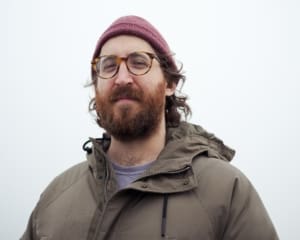
In Their Own Voices: Small Island Learning Exchange
Max Cawley
Museum of Life and Science
Durham, NC
Under climate, social, and economic challenges, the vibrant and unique cultures, languages, and ontologies of small islands in the Carolinas are also under threat. This project aims to gather the living memories, long-term place-based knowledge, traditions, and personal histories and stories of residents on small islands as a way of characterizing and understanding climate, health, social, and economic resilience. The oral history and photovoice artifacts and ephemera developed through this project are catalogued and archived as a way of engaging neighbors and outsiders in understanding the implications and imperilment of sea level rise, underinvestment, and retreat - and a testament to local strength, cohesion, and preservation of culture.
“All places are both environmental and cultural places - the histories of the land and the people who inhabit it are intrinsically linked. While we look closely at the environmental phenomena that drive change, we ought not take only a surface-level look at the people and culture of these places. You can know everything about a community geographically, climatologically, hydrologically - but you still won't know anything about the place unless you can hear directly from the people who know that place best.”
Collaboration opportunities:
Incorporating human voice into research, storytelling, or community projects
Applying a tool for asking questions and processes for ethical research and storytelling
Testing this tool's method for contextualizing change through personal history and culture, including in different cultural contexts
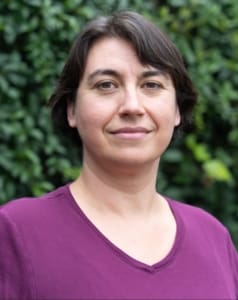
Empowering Patients to Protect Themselves from Wildfire Smoke by Building Air Filters
Lily Kelly
La Clínica de La Raza, Inc.
Oakland, CA
Hazardous air quality due to wildfire smoke has become more common during fire season in California over the last ten years, resulting in poor health outcomes for patients who are vulnerable to pulmonary threats and unable to afford or acquire effective air filters. In 2024, La Clínica hosted a “train-the-trainer" event in which La Clínica staff, together with UC Berkeley students who led the workshop and prepared the training materials, demonstrated how to make a low-cost air filter from items that are commonly available at hardware or big box stores. La Clínica staff attended and received the training materials as well as practiced giving the training in both English and Spanish. La Clínica also provided the fans, filters, and tape to create the air filters. Subsequent workshops are slated to occur in conjunction with group sessions for pregnant patients and new parents, who are a large portion of the patients we serve and are particularly at risk from poor air quality during wildfire events.
“La Clínica's patient population is at great risk from climate change but is also home to enormous resilience, adaptability, and a do-it-yourself culture that will only become more valuable as everyday life is increasingly impacted by climate change threats. Those most at risk are often the least responsible for emissions, but our patients can attain more agency by learning to make the tools they need to reduce their exposure to the negative health effects of climate change.”
Collaboration opportunities:
- Donate supplies or funds to support future workshops
- Support participant recruitment for air filter workshop events in partnership with La Clínica
- Work with La Clínica staff to learn how to host independent workshops
- Support calls for air filters to be covered for all patients with conditions that make poor air quality especially dangerous
Educating and Assisting Hollygrove-Dixon in Using Mobile Solar Generators to Combat the Urban Heat Island Effect and Heat-Related Illnesses During Extreme Weather
Raymond D. Sweet
Hollygrove-Dixon Neighborhood Association
New Orleans, LA
The Hollygrove-Dixon Neighborhood faces extreme heat challenges due to the Urban Heat Island effect, exacerbated by the loss of tree canopy and high electricity costs. Our project aims to enhance climate and health equity by educating residents on heat-related illnesses and the benefits of tree planting while providing an immediate sustainable cooling solution. As the homes in the community were built over 80 years ago, they were not designed for today's climate challenges. While we wait for funding to help fortify homes to be more energy efficient, we must provide an immediate, sustainable solution to mitigate heat-related health risks. Through hands-on workshops, community members will learn to build mobile solar generators, enabling them to power cooling units without incurring higher electricity bills. This initiative will empower residents with renewable energy solutions, improve climate resilience, and foster environmental stewardship in the community.
“Hollygrove-Dixon reminds me so much of my BIPOC neighborhood in Tampa where I grew up. Hollygrove-Dixon residents are inspiring, because they are full of love and life. They do not allow their situation to hold them down.”
Collaboration opportunities:
- Developing and consulting on a strong curriculum around the Urban Heat Island effect, specific to the issues in our community, that can be shared with Hollygrove-Dixon residents
- Identifying the right materials to ensure generators are strong enough to safely run a wall unit
- Identifying funds that can help pay for the generators and class materials
The Markham Public Library Prairie Walking Path
Sheetal Khedkar Rao
Nordson Green Earth Foundation
Chicago, IL
Chicagoland neighborhoods show striking inequities in both tree canopy and health. Markham, Illinois, a South suburb of Chicago, a 75% Black community, has a Walkability Score of 5.5% in contrast to the Cook County region score of 67.8%. Moreover, Markham lies between several interstate highways, and this proximity has led to an emphasis on driving over walking. The goal of our project is to increase biodiversity and community connection while harnessing the health co-benefits of walkable and accessible greenspace in the form of a native prairie plant walking path at the Markham Public Library. We will employ community engagement strategies including surveys, participatory science, and local partnerships to ensure we center residents’ desire for more nature in Markham. We will engage community members of all ages around environmental concerns through local schools and multigenerational library programming related to climate, nature, and biodiversity.
“Our volunteers have so much expertise to share and care deeply about nature, health, and equity. It fills me with hope to see the connections we have made with them and fostered amongst them as well as with the local library and local schools. We are proud and grateful to be able to give this community the walkability, accessible nature, and healthful connections that they have always wanted.”
Collaboration opportunities:
- Help with measuring outcomes to show the benefits of the new greenspace
- Help with well-being survey creation and data interpretation
- Funding for weather stations and a dashboard to show local communities how the greenspaces created affect heat, noise, air pollution, and biodiversity
- Funding for library programs related to nature, birding (i.e. binoculars, books, tablets for birding apps)
- Funding for storybook walk signs
- Help acquiring expert speakers for programs at the library
- Funding for future projects
The content on this page does not necessarily represent the views of any one organization, the CCN, or the National Academies of Sciences, Engineering, and Medicine. We are sharing this content based on the expert guidance of CCN Members to serve as a resource.
CCN sponsors have enabled seed funding for CCN Member Action Plans. CCN Members are independent entities not formally affiliated with the National Academy of Medicine. Featured project plans and descriptions are the responsibility of the associated community organization and do not necessarily reflect the views of the NAM or the National Academies of Sciences, Engineering, and Medicine. We look forward to sharing Action Plan progress and CCN Members’ lessons learned along the way. Sign up for the NAM climate listserv to receive updates.
Social Graphics and Text
Help Spread the Word!
The following text and graphic are for you to adapt and use on your website, in your newsletters, and across your social channels.
Example Post 1
Example Post 2

Graphic
Related Products


